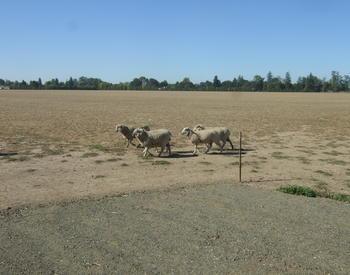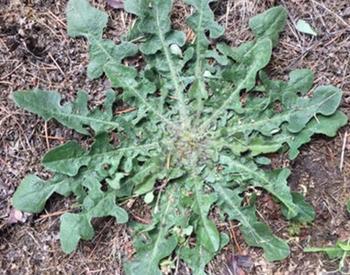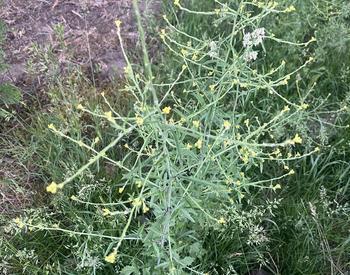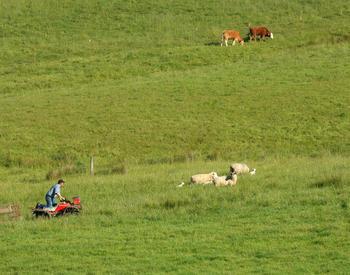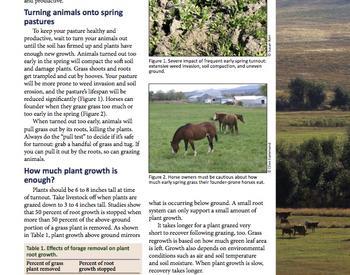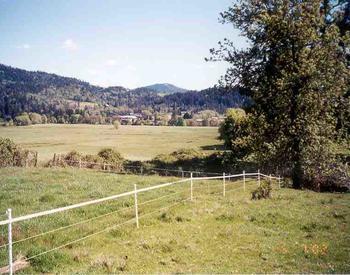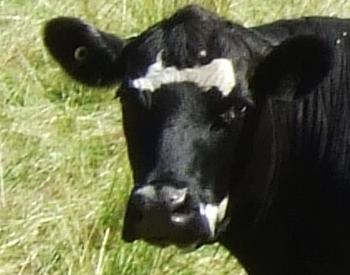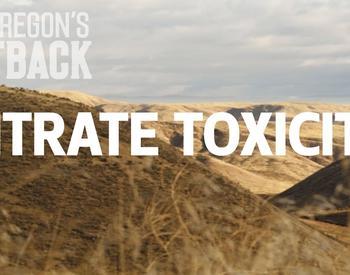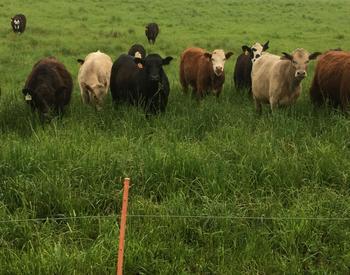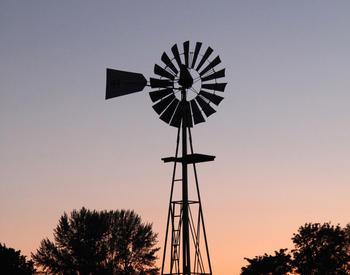You’ve decided you want to reseed your pasture or hay ground, but you are not sure what to plant, when to plant it and if there is anything you should do before spreading seed over the ground. There is definitely a sequence to the process, including major topics related to soils, weeds, forages and livestock.
Let’s go over these briefly to make sure you understand the need to consider them carefully. At the end of this article, there are some references that you should study more thoroughly. The more you know, the better you can prepare for planting, the better the plants will do and the better your fields will look! And, you can provide quality forage for your livestock.
Soil fertility
Soil is a medium for plant nutrients and needs to be at the proper pH (acidity or alkalinity) for the plants you want to grow. For pasture grasses and clovers, a pH of 5.5 is the lowest you want your fields. Most fields in western Oregon tend to be acidic so we need to lime them to increase the pH. Using Ag Lime also adds calcium, whereas using dolomitic lime adds both calcium and magnesium. Many fields are deficient in phosphorus and potassium, and sometimes boron (important for good clover growth).
The problem is we cannot tell just how much lime and fertilizer the soil needs unless we take a soil sample and have it tested in a certified lab. Using soil test results to guide your fertilizer application (prescription fertilization) can help you add the proper amounts to make good economic decisions and guard against environmental damage.
A 2011 OSU survey of western Oregon fertilizer practices showed a $32 per acre per year savings when prescription fertilizer programs were used compared to a standard (guess) application of 200 lb of 16-16-16, which a lot of people actually do. Since lime and some of the fertilizer ingredients move very slowly into the soil when applied as a broadcast application to the soil surface, it is beneficial when replanting to incorporate (mix in) these materials into the top 3 inches of the soil where the plants can access them. But wait, read the section on weeds before you fertilize.
Weeds
You must take care of existing weed problems before you plant. Just turning over the soil usually does not kill the weeds, and it can bring weed seeds that have been hiding in the soil to the top where they can germinate.
A smart thing to do is positively identify the main problem weeds, select an herbicide that is effective on those particular weeds, spray at the proper time and rate, wait for weeds to die and then prepare a good seed bed (including mixing in any required fertilizer and lime). Don’t plant yet! But wait for any weed seeds to germinate, kill those seedlings with herbicides and then without disturbing the soil (we do not want more weed seeds on top), plant your new seeds, and watch 'em grow!
If you do not want to use herbicides, plan on turning the sod over and summer fallowing it to kill the existing live weeds. You will probably have to turn the soil more than once to kill all the weeds. This process is not without its negative attributes, as it may take more fossil fuel than herbicide use and care needs to be taken that soil erosion does not occur while the field is unprotected by plants. Consider cover cropping or annual cropping to avoid erosion and build tilth. But wait; read the next sections before you plant seeds.
Forages
Which forage seeds to plant is another complex topic. The most important point in choosing forages is the field characteristics, especially drainage and irrigation capabilities.
- Some plants do not grow well in poorly drained soils. Two examples are orchard grass and alfalfa.
- Other plants (for example, fescue) do well in any type of soil, and some are intermediate.
- Some plants are more sensitive to warm weather and drought (for example, ryegrass).
White clover generally needs irrigation to live from year to year. Perennial springs and natural sub-irrigation in some fields can provide enough water to keep this legume living without farm irrigation. And, some varieties of this legume are more tolerant of dry summer conditions than others and may persist better than those that are not. Subterranean clover is a winter annual that does well without irrigation because it dies every summer and then seeds from the previous year germinate to repopulate the fields.
Soil depth is also important to consider when choosing the type of forage to plant. Alfalfa requires several feet of deep soil, whereas plants like ryegrass do well in shallow soils. Different plants require different management, for example grazing or haying height. Therefore, it is also important to keep this in mind when combining forages. Too many forage types mixed together complicates the management of the pasture or hayfield.
Besides the forages mentioned above, there are also many other kinds of legumes (red clover, crimson clover, Birdsfoot trefoil, arrowleaf clover and more) and other plants such as plantain, chicory and brassicas (foraging turnips, rape, radishes) that can be planted for grazing. Warm-season grasses and hybrids are options to extend forage supply into the summertime.
Livestock
"Who's Coming to Dinner" is a video that examines the eating habits of cows, sheep, horses and goats and explores how forage selection, plugging, trampling and fencing contribute to a pasture's health and sustainability.
"Properly maintained pastures can provide a wonderful buffet for all kinds of animals, but proper care requires an understanding of who's coming to dinner," said David Hannaway, OSU Extension forage specialist. "The structure of an animal's mouth helps determine how and what it will eat. Since most animals are built differently, they eat differently."
Consider what animals you want to feed with your forage in selecting what type of seeds to plant.
Timing
Plant seeds in the fall just before the rainy season resumes. Planting too early may germinate seeds that later succumb to lingering hot days of summer or extended heat into early fall. Excessively wet ground in the spring usually prohibits early plantings. But, if you have irrigation, late spring is a great time to plant. Without irrigation, summer heat can quickly dry up little seedlings.
